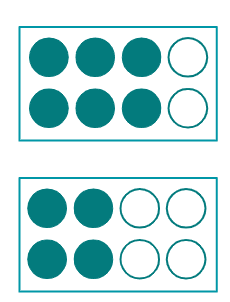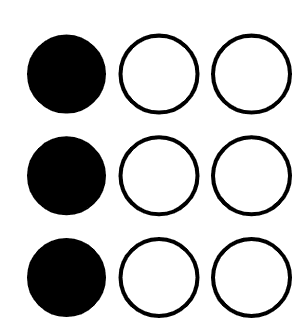Starter quiz
 Which arrow shows on this number line?
Which arrow shows on this number line?- a
- b ✓
- c
-
 Which fraction best labels where the arrow points on this number line?
Which fraction best labels where the arrow points on this number line?- ✓
-
-
-
 Which of these fractions could go between the two marked on the number line?
Which of these fractions could go between the two marked on the number line?-
-
- ✓
-
-
 of 12 is equal to ______
of 12 is equal to ______- '3' ✓
 of 12 is equal to ______
of 12 is equal to ______- '4' ✓
 Match the letters on the number line with the fractions that would sit in that position.
Match the letters on the number line with the fractions that would sit in that position.- a⇔✓
- b⇔✓
- c⇔✓
- d⇔✓
Exit quiz
- Which image shows that =
 Which fractions are represented by this image?
Which fractions are represented by this image?-
-
- ✓
- ✓
-
 How would you describe the position of on this number line?
How would you describe the position of on this number line?- Close to 1 whole
- Close to zero ✓
- Between 0 and ✓
- Close to
-
 Which letter best represents the position of on this number line?
Which letter best represents the position of on this number line?- a
- b
- c ✓
- d
-
- Which images show that of the counters are black?
 Which of these fractions could go at point a on the number line?
Which of these fractions could go at point a on the number line?- ✓
-
- ✓
-
-
Worksheet
Loading worksheet ...
Presentation
Loading presentation ...
Video
Lesson Details
Key learning points
- When you compare two fractions, the whole must be the same.
- Use representations of sets of objects to divide them into equal parts.
- Count how many objects are in the number of parts needed.
- The whole has been divided into __ equal parts and you have __ of them.
Common misconception
Children may think that fractions that look different cannot represent the same part of a whole. They may also still think that a bigger denominator means a bigger fraction.
Give plenty of opportunity to use manipulatives and representations to show sets and groups of objects divided in different ways so that they see practically that the same part of a whole can be described and represented by different fractions.
Keywords
Divided - When something is divided, it is split into equal parts or groups.
Equal parts - Equal parts can be combine to make a whole.
+






